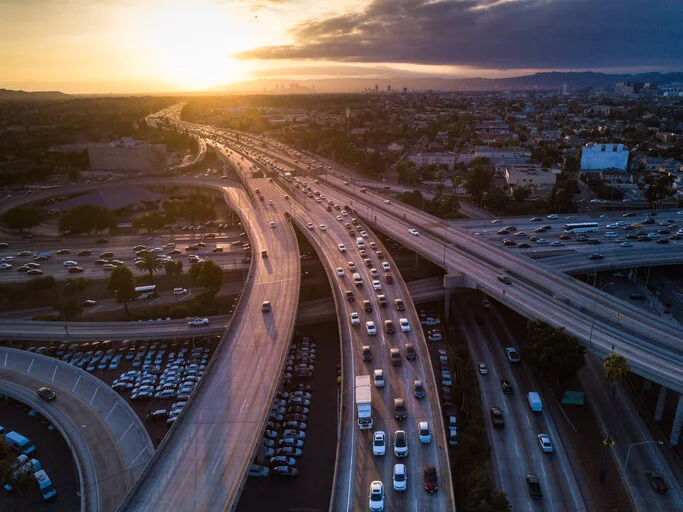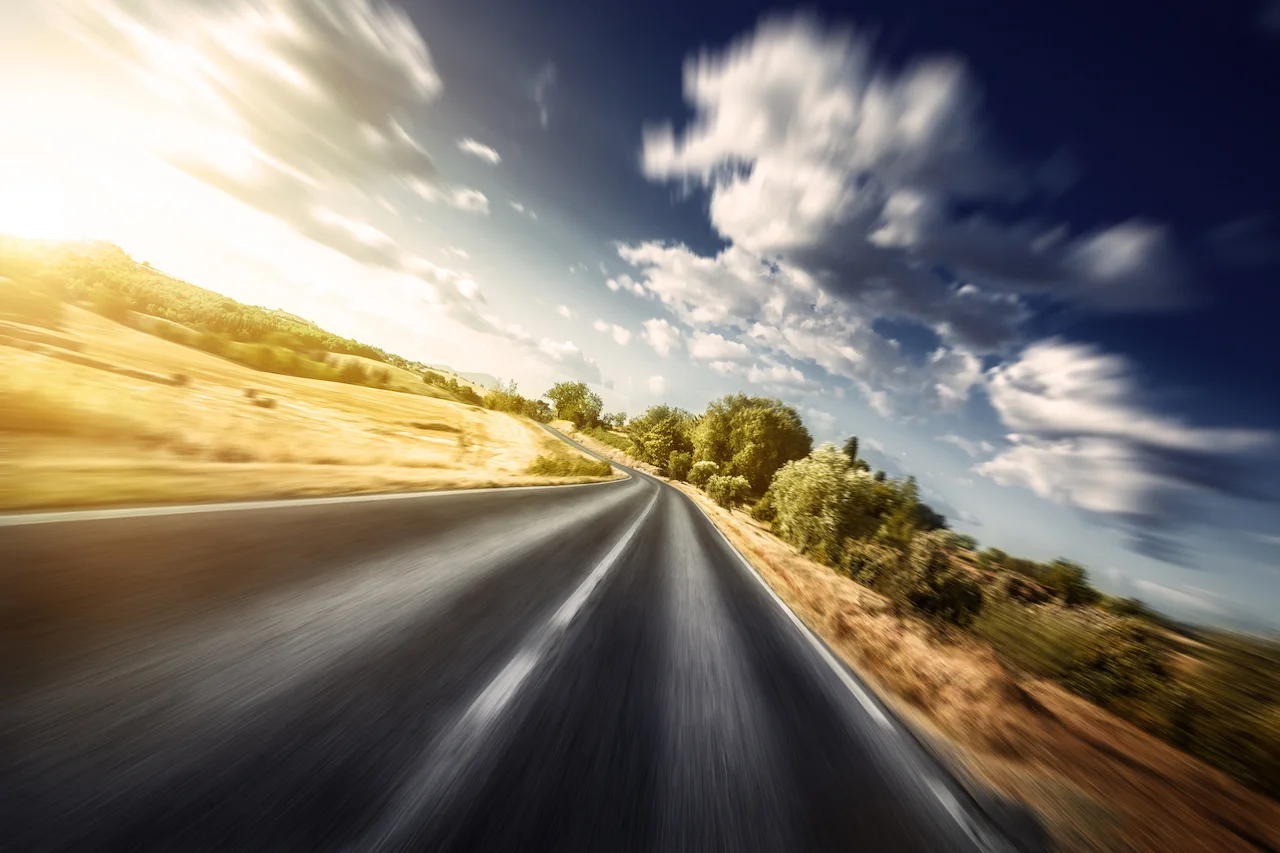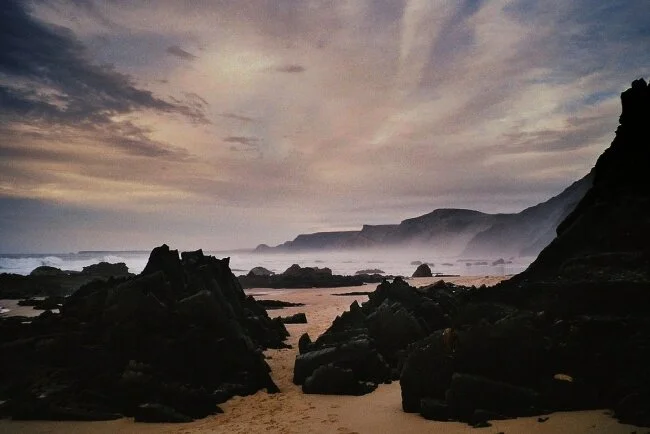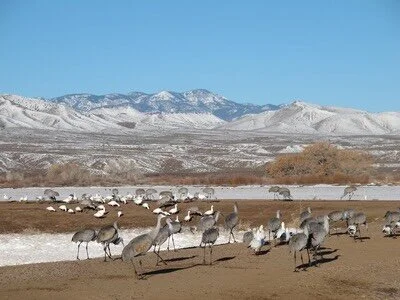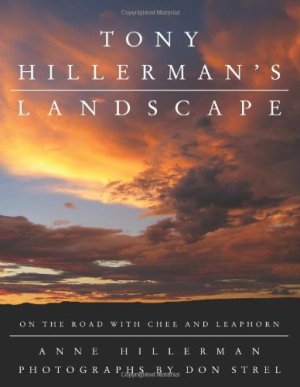Digging into deep connections between people and their stuff, Carolyn Handler Miller compares John Steinbeck's Western Flyer to her Subaru Impreza. Reflecting on shared journeys, breakdowns, and revivals, the article culminates in the poignant homecoming of the Western Flyer to Monterey, CA.
All in road trip
The End of the Road
One day Megan Moore made the courageous decision to quit her job and embark on a cross-country road trip with no set plan. Along the way, she finds freedom in being alone, experiencing new things, and meeting people who have taken the road less traveled. This uplifting story reminds us that it is never too late to take risks and explore the world around us.
What Is It Like to Drive Cross-Country Right Now?
As the Delta variant began circulating widely in the U.S., Suzanne LaFlamme, her husband, and adult daughter decided to cancel flights and drive cross-country for a family visit. When they prepared for the trip, it was Covid’s partisan divide and widespread differences in mask wearing that concerned them as much as covid safety and choosing where to stay along the way.
The “Goat Rope” Trip: Lessons Learned About Travel in the Time of Covid-19
Not every trip goes as planned, especially during a pandemic. But if the success of travel can be measured by human kindness or a newly acquired bit of local lexicon, then Laurie Gilberg Vander Velde’s brief attempt at travel during COVID-19 was a win.
A Road Trip During the Coronavirus Pandemic: Is it a good idea?
Compelled by necessity, Carolyn Handler Miller and her husband, Terry, set off for California from Santa Fe, New Mexico, with the coronavirus still gripping the country. Finding themselves in an unpredictable new world, they returned home safely and wiser, but would they do it again?
Music, Girlfriends, Facebook, and Medellin
Ellen Barone had almost written off social media when a Facebook private message from a long lost Scottish friend flashed across her iPhone display in Medellin, Colombia. Seconds later the two were live chatting across continents, sparking powerful memories infused with laughter and music and a shared New Mexico road trip.
NEW HAMPSHIRE—Presidential Primaries, Sightseeing, Skiing, and Summer Fun
by Judith Fein
When I was a child, living in New York City, my family loaded themselves and their belongings into a car every August and headed for New Hampshire. There was never any question about going somewhere else; we had allergies and Bethlehem, New Hampshire had no pollen. In a fit of hopeless nostalgia, I decided to go back this past summer, to see if I could find the locus of the sneeze-free bungalow colony where we stayed. And, being a travel addict, I decided to check out what else there is to see in New Hampshire with 10 days, a car, and a desire for culture, charm, a foodie infusion, local attractions, art, nature, and quirk.
I discovered that New Hampshire is a year-round destination: Fall foliage viewing, skiing, and Presidential primary candidate viewing that starts in the Winter, and touring and hiking in the Summer.
Road Kill
Mageru pulls over to the side of the road, parks and idles the Land Cruiser. We are still a few hours away from arriving back in Addis Ababa. He looks over to me, pats the steering wheel and says “I am a little tired. You can drive.”
This does not strike me as a generosity I should accept. Although I am confident in Canada, Ethiopian driving doesn’t exactly rev my engines. “Oh…I don’t think so, honey. The driving here is very different from my experience back home.”
Driving In France
Nervously, I edged into traffic and was, within a few minutes of breath-holding, relieved by the minor miracle of finding a free parking space in front of a cafe. I sat down with my iPhone to map a plan for the week.
In search of sun and warmth, my idea was to head for the Mediterranean beaches but was told it would be very crowded in July, and the distance seemed too far – 8 hours on expensive autoroutes. So I convinced myself to keep it simple on the first day and headed to Beaune, the "wine capital of Burgundy," less than two hours away by toll road.
When I was 11 years old, my father took my 15-year-old-sister and me on a cross-country car trip from Tamaqua, Pennsylvania to Seattle, Washington to San Diego, California, and back in 30 days. What I remember about the trip was my father saying, “Here we are at the Space Needle (or Disneyland or the Grand Canyon or wherever), you have 10 minutes, take some pictures, I’m going to the souvenir shop to buy some pennants.” (For some reason, we got into collecting pennants that ended up on the walls of our basement.) My father drove 10,000 miles in 30 days, and I got to see the U.S.A. at 60 miles per hour.
Searching For A Hidden Western Algarve Beach
by Connie Hand
Admittedly, the beaches in the Portuguese Algarve are famous for their beauty, but they are also very crowded.
Having been to the Algarve several times, I always wondered where the quiet, uncrowded beaches were. There had to be many since the coast was about 60 miles long. But how to find them?
Travel and True Love
Greyhound killed our college romance.
She was finishing her B.A. at UVM, I was beginning a Ph.D. at NYU, and the nine-hour bus trip between Vermont and New York slowly eroded love, commitment, and finally, even passion. She graduated, found a job, and got involved with an English literature student. I learned my clinical psychology, tasted the pleasures of New York, and struggled through a dissertation.
But when her literary affair ended badly, she called, and I invited her down to my Greenwich Village apartment for a weekend reunion.
Greyhound again.
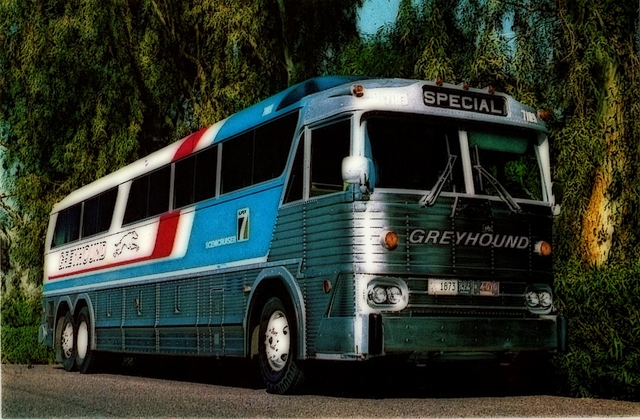 Greyhound Super 7 Scenicruiser Bus, 1971 by aldenjewell/flickr.com
Greyhound Super 7 Scenicruiser Bus, 1971 by aldenjewell/flickr.com
Farmer's daughter that she was, she'd never seen a ship of any size, so we walked down Houston Street to the waterfront. Good fortune — a cruise ship was about to embark. On the decks stood a flock of blue-haired ladies in borrowed mink stoles and a clutch of grey-haired men in new camelhair overcoats, all throwing streamers to those below. Catching the streamers were grown-up sons and daughters, waving and calling to the departing vessel.
“Don't worry!” they shouted. “Don't worry!”
I started to worry.
I worried that I'd be grey-haired before I went anywhere. I worried that by the time I left I'd be too old to enjoy wherever I was going. I worried that when I finally embarked from the Houston Street dock, the last words I'd hear from loved ones would be, “Donnnnn't worrrrryyyyyyy...”
A Hitchhiker's Guide to Namibia
The bakkie went over a large pothole and I was jolted awake, the shock making me inhale deeply and sharply. The air was hot. My throat and eyes stung from all the dust. The unbending road ran like a dagger through the heart of the desert. There was nothing else. Just us, the road, the desert, the sky and the burning sun, and the great weight of my hangover forcing itself in on my shriveled, raisin-like brain and lungs. I wondered for a second if we were heading towards the end of the world.
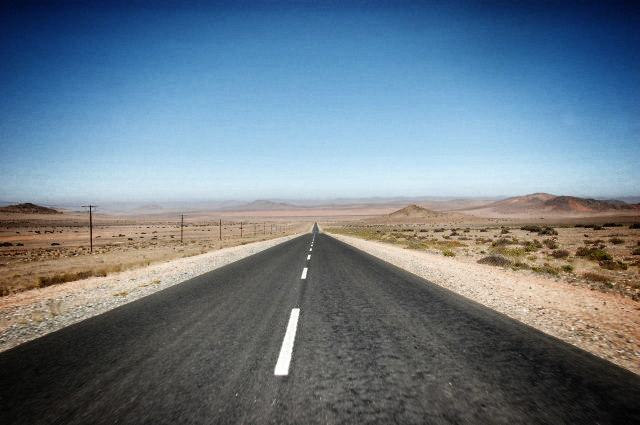
It had all been a terrible accident really. I knew almost nothing about Namibia except that there were a lot of sand dunes, and without a few too many drinks to lubricate the imagination and fire the yearning for adventure, it probably never would have happened. The truth is though, I could probably say the same about a lot of my trips over the years, especially the most interesting ones.
It had all started in what might loosely be called the ‘town’ of Springbok, a little way back across the border. I was there on a job and had confessed my ignorance of Namibia to a local Afrikaans prospector’s son named Rico, who I had got talking to at the local bar. His head was similar in size and shininess to a watermelon, yet still looked disproportionately small for his enormous frame.
Now there I was in the back of his battered old vehicle hurtling northward away from the South African border like a bat out of hell, still not entirely sure where I was headed or why. And good old Watermelon Head was at the helm up in front of me, his equally large wife bumping along in the seat next to him and occasionally barking what I could only imagine were strong Afrikaans expletives at her husband. But still he went bravely on, potholes and abuse or no, taking me ever deeper into the burning heart of the unknown.
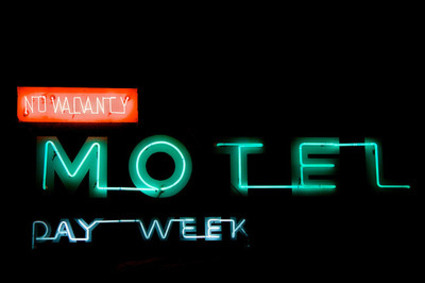 Sometimes you should really just go with your gut instinct when you’re on the road. Such was the case when we motored up to a rural Indiana motel late last fall. Granted it was only 3:45 P.M. and check-in wasn’t until 4 :00, but since there were only six rooms I figured it really wouldn’t be a problem. Well, I figured wrong.
Sometimes you should really just go with your gut instinct when you’re on the road. Such was the case when we motored up to a rural Indiana motel late last fall. Granted it was only 3:45 P.M. and check-in wasn’t until 4 :00, but since there were only six rooms I figured it really wouldn’t be a problem. Well, I figured wrong.
To be honest, just walking into the motel office gave me the creeps. It was small and dingy and covered in dust; but to be fair, everything in that part of the country was covered in dust. And then there was the manager, who at first wouldn’t take her eyes off the mini television in front of her, or even acknowledge that another person had entered the room. I cleared my throat a few times. No response. I made some noise and shuffled my feet a bit. Still no response. Finally, I awkwardly blurted out, Hello, I’m here to check-in. That at least elicited a stony cold look.
The Magical Dunes of White Sands
words + photos by Jean Kepler Ross
They say one picture is worth a thousand words. I believe being there is worth a thousand pictures.
For several years, I edited a travel guide about New Mexico and saw many photos of the gorgeous white sand dunes in southern New Mexico, known as White Sands. Each photo illustrated the beauty of the dunes - sensuous mounds of sand, blooming yuccas, delicate lavender wildflowers, kids jumping off the dunes into space...it all intrigued me. I traveled in that area a few times but never had a chance to actually visit White Sands until a few weeks ago.
The Bosque Is For The Birds
words + photos by Laurie Gilberg Vander Velde
“Maybe I will go to the car and get my tripod,” I said to my husband. We were at the edge of a mostly frozen pond, standing on snowpack, bundled up against the 19 degree cold in the pre-dawn dark. A glimmer of light was starting to show in the sky. We had staked out a spot in the line of tripod-wielding photographers with their mega-humongous lenses We were all waiting for the awakening snow geese and sandhill cranes to perform their morning “fly out.” We were at Bosque del Apache, a National Wildlife Refuge near San Antonio, New Mexico about an hour south of Albuquerque. It’s a place known to many serious bird watchers who throng to the area in the winter to watch thousands and thousands -- and thousands of snow geese and sandhill cranes come and go.
 We are not avid birders, nor am I a zealous photographer. How could I be? I love taking pictures and dabble in PhotoShop, but I tote a point-and-shoot camera. It’s top of the line and somewhat flexible, but it’s still a point-and-shoot, and the SLR crowd look at me with some disdain. Much as I would love to use a digital SLR and be able to change lenses, my body just can’t schlepp that much weight. And my husband, despite my batting my eyelids at him, has turned me down flat. It was hard not to be intimidated by the very serious looking phalanx of expensive equipment lined up on tripods waiting for “the moment.”
We are not avid birders, nor am I a zealous photographer. How could I be? I love taking pictures and dabble in PhotoShop, but I tote a point-and-shoot camera. It’s top of the line and somewhat flexible, but it’s still a point-and-shoot, and the SLR crowd look at me with some disdain. Much as I would love to use a digital SLR and be able to change lenses, my body just can’t schlepp that much weight. And my husband, despite my batting my eyelids at him, has turned me down flat. It was hard not to be intimidated by the very serious looking phalanx of expensive equipment lined up on tripods waiting for “the moment.”
Our home is now in Santa Fe, so we made the easy two plus hour drive to the Bosque (means “forest” in Spanish) the night before, aiming to get there in late afternoon in hopes of seeing the “fly in.” This is the time during the golden hour before the sun sets and the moments after sunset when tens of thousands of snow geese and sandhill cranes fly in. A foot of snow had closed the refuge a couple of days before, but the plows had sort of cleared the roads. The observation decks were still snow covered. The big problem was that there were limited areas of open, unfrozen water in the ponds, and the birds want to land on open water where they are safer from predators. The helpful folks at the visitors’ center can tell you where the birds landed the night before, but the birds don’t file a flight plan, so we can only guess where they might land tonight.
I grew up in the jungle of Maui, barefoot, climbing trees, keeping geckos as house pets. A trip to the busy west side of the island was an all day affair. After a two hour dance with the narrow, cliff-side Hana Highway we’d arrive in Kahului where I was fascinated by the fluorescent lights and honking car horns. I’d sing along to the Ka’ahumanu Center jingle on the radio and the grocery store might as well have been Disney World I was so eager for the cheese samples, flower displays and rows of sugary cereal I might possibly convince mom to splurge on.
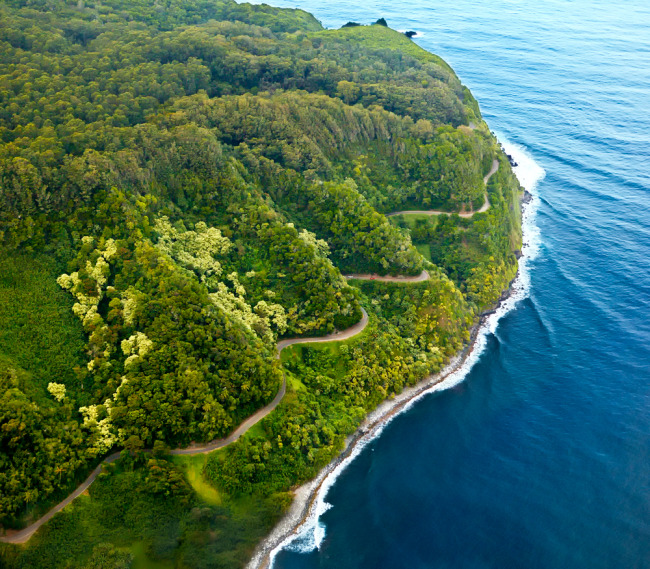 The winding Hana Highway
The winding Hana Highway
When I was nine, my family relocated to Maine where grocery stores weren’t so special and civilization was easily accessed just a few minutes down the road. I spent my teenage years still titillated at the mere mention of a trip to the mall as it seemed Maine never got the overdevelopment memo the rest of the country took to heart in the 90s. The closest mall was still two hours away; I’m a country girl.
Though I still live in Maine today, I at least have made it to Portland, the “big city”. I have had the pleasure of getting my traveler’s feet wet as I’ve grown out of my rural roots but when I returned to Maui in 2005, I was caught off guard—the visit was nothing like I expected.
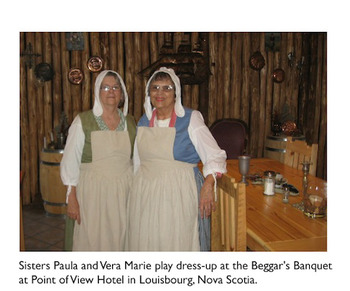 On our first trip together, we covered only a few blocks in a neighborhood of two-story white wooden houses in Columbus Ohio. I was pushing my sister Paula's stroller. (Ask her. She would no doubt say that I was always pushy.) At a few months old, she was oblivious to the great world around us--the bulbous cars parked along the street, the empty lot, dusty in the summer sun, or the brick store buildings up ahead on Cleveland Avenue. I, on the other hand, being ten years older, ten and a half when she was only six months old, I knew about everything.
On our first trip together, we covered only a few blocks in a neighborhood of two-story white wooden houses in Columbus Ohio. I was pushing my sister Paula's stroller. (Ask her. She would no doubt say that I was always pushy.) At a few months old, she was oblivious to the great world around us--the bulbous cars parked along the street, the empty lot, dusty in the summer sun, or the brick store buildings up ahead on Cleveland Avenue. I, on the other hand, being ten years older, ten and a half when she was only six months old, I knew about everything.
As I walked, and she patted her chubby hands together, I daydreamed about how she would grow up with fond memories of her loving big sister and be eternally grateful for my attention and care. (Always about me, wasn't it, Paula?)
These little walks down the block were definitely not the only trips we took as children. Our parents loved to load up the car and go--most anywhere. Sometimes long car trips, sometimes just a drive down to the Scioto River for a picnic. On Sunday drives in the Ohio countryside, seeing the landscape between our father's salt and pepper crewcut hair and our mother's black bun, we would shout out “Go left” or “Go right” or “Go straight” at each interseciton--a kind of sibling Mapquest. It was a democratic route finding that our dad adventurously accepted. “Go” was the operative word.
by Edie Jarolim
Many years ago, I went to Spain with a man who turned out to be an Ugly American. The beer was never cold enough for him and he often mangled the language, but got annoyed at even my mildest attempts at correction. So I kept my mouth shut when, in a bar in Barcelona, he loudly insisted on a “servicio frio, muy frio” rather than a chilled cerveza. The bartender, not comprehending why anyone would demand a very cold bathroom, nevertheless pointed him towards the men’s room.
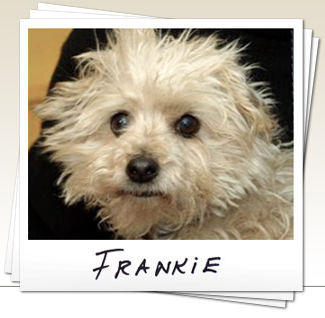 These days, I mostly travel with my small terrier mix, Frankie. He rarely embarrasses me and never by being arrogant. But Frankie presents the opposite problem to my Spain experience: that of the very hot bathroom.
These days, I mostly travel with my small terrier mix, Frankie. He rarely embarrasses me and never by being arrogant. But Frankie presents the opposite problem to my Spain experience: that of the very hot bathroom.
Let me backtrack a bit.
It’s almost an annual tradition, my summer drive from Tucson to San Diego, started when I moved from Manhattan to Arizona nearly 20 years ago. I go to escape the triple digit desert heat and to visit friends I made when I was doing dissertation research at the University of California, San Diego.
Once you get on to I-8 from the soul destroying I-10, the drive, through pristine swathes of Sonoran Desert, is spectacular. Few people slow down to enjoy the view, however. Keeping up with the traffic flow means going about 85mph. I’d zip along until I reached Yuma -- at the Arizona/California border and about the halfway point in the seven-hour drive -- and get gas at one of the many convenience store/stations clustered near the turnoff and use the bathroom.
At least that’s what I did until I got Frankie, my first dog, a few years ago.
In addition to nearsightedness and a deep sense of curiosity, my Dad and I shared a love of good stories. After his death two years ago, I had the opportunity to travel in his tire tracks. My road trip became a lesson in discovery, geographically and emotionally, showing me aspects of my father I had never seen and beautiful places I’d never visited. Ghosts have a creepy reputation, but my father’s made the perfect traveling companion.
Let’s start at the beginning. My Dad was Tony Hillerman. During his 35 years of writing best-selling mysteries, millions of fans treasured his stories of Navajo detectives solving crimes on the panoramic Navajo Nation. He also inspired me to start The Tony Hillerman Writers’ Conference, where he served as our most popular faculty member for several years.
Before Dad died in late October of 2008, my photographer husband Don Strel and I had launched our own book project, “Tony Hillerman’s Landscape: On the Road with Chee and Leaphorn” to show readers who had never been to Indian Country the settings in which the fictional Tribal Officers solved crimes. I gathered quotes from Dad’s books that described places where his detectives pause to comment on the scenery in Arizona, New Mexico, Utah and Colorado. Then we hit the road for Baby Rocks, Teec Nos Pos, Toadlena, Church Rock, Kayenta, Tsaile, Tuba City and other breathtaking places Dad loved.
Don and I finished the book with both relief and regret a few months after Dad died. We decided to promote it and honor my father’s memory with talks and slideshows to support public libraries. Little did I know that I would be getting most of the benefit, priceless stories from people in the audience whom my Dad had touched: loyal readers, distant relatives, Indian consultants, long-lost friends, and former co-workers and students from his days at the University of New Mexico.
At the small Placitas, N.M. library, a woman came up to me after my talk. “I have to tell you how I stalked your father,” she said. I was all ears.


